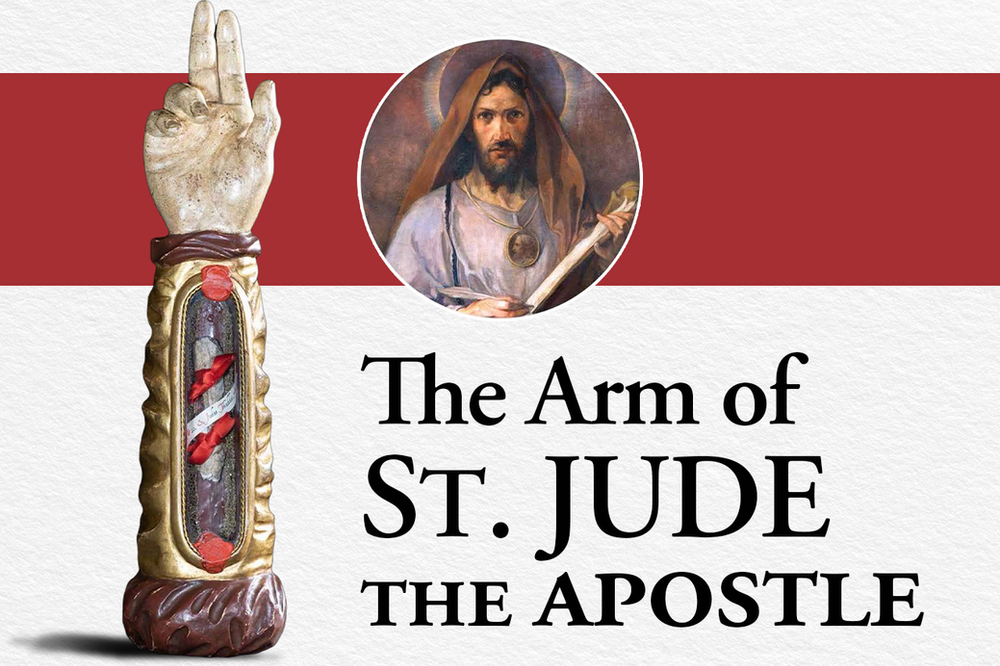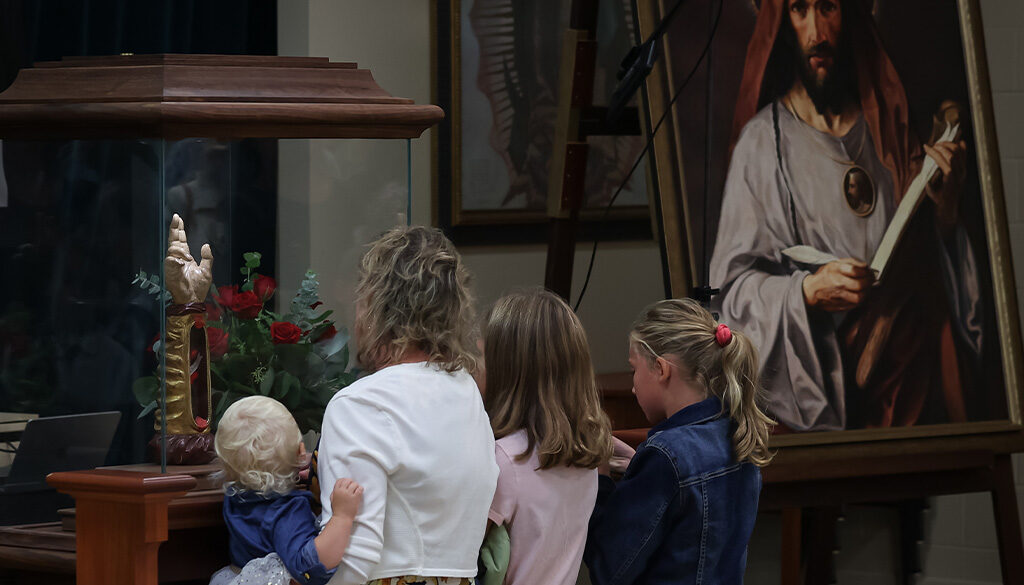The Arm of St. Jude
– Veneration on September 15th –
Blessed as it is with an abundance of saints’ relics, the Shrine of Our Lady of Guadalupe is accustomed to joyfully making veneration of these relics available to pilgrims throughout the year. However, on Friday, September 15, the Shrine will be privileged to host a truly exceptional relic: the forearm of St. Jude, reportedly the largest relic of an Apostle outside Europe. Pilgrims may venerate the relic in the Shrine Crypt from 1 p.m. to 9 p.m., when the doors will close. At 6 p.m. there will be a votive Mass of St. Jude in the Shrine Church.
The Story Behind the Relic
The Dominican Shrine of St. Jude in Chicago, where the relic is kept, explains the history of the Apostle’s remains, and how the forearm made the long journey from the Middle East to the United States:
After his martyrdom, the body of St. Jude was buried temporarily in Mesopotamia and then given permanent interment in St. Peter’s Basilica in Rome with the other Apostles. His forearm was incased in a silver reliquary and located for many centuries in Armenia. At the beginning of the 18th century, Armenian Dominican missionaries left Armenia because of the Moslem persecution and brought the relic to Smyrna, Turkey. After another round of persecutions, the relic was given to the Dominicans in Turin, Italy.
In 1949, the Dominican Province of St. Peter Martyr in Turin presented the relic to us on the 20th anniversary of our Shrine’s dedication to St. Jude.
The forearm relic, along with three much smaller relics of the Apostle, is kept at the Dominicans’ Shrine for public veneration, but is also brought out on tour from time to time.
Beacon of Hope
Many are drawn to St. Jude as a beacon of hope, since he has long been venerated as patron of hopeless causes. Rev. Patrick Tobin, OP, of the St. Jude Shrine describes how much this devotion can mean to pilgrims: “It is a continuous source of amazement for me, to see people’s reaction. People are willing to travel great distances to view and touch the relic.” He adds that what especially moves him “is when they come up to me and say what St. Jude has done in their life and how St. Jude has been an advocate in their lives in times of need.” The origins of this devotion are unsure, but as Renata Sedmakova explains on Aleteia, countless miracles have been attributed to his intercession and various saints have had revelations concerning his intercessory power.
As a saint of hope for the hopeless, St. Jude is a particular friend and helper for our time, when so many are tempted to regard their own lives or the world’s future with anxiety, cynicism, or even despair. For some, his relics make this hope more vivid: This saint is a real person, who truly lived on earth, lives now in eternity, and, by God’s grace, offers real help to the many who call on him.

More about Relic Veneration at the Shrine
Public veneration of 1st-Class Relics at the Shrine of Our Lady of Guadalupe takes place by the way of a general blessing at the conclusion of Holy Mass. Should the saint’s feast day fall on a Sunday or a Solemnity, there may not be a public veneration of that saint’s relic, however, the relic will be available for private veneration upon request.




